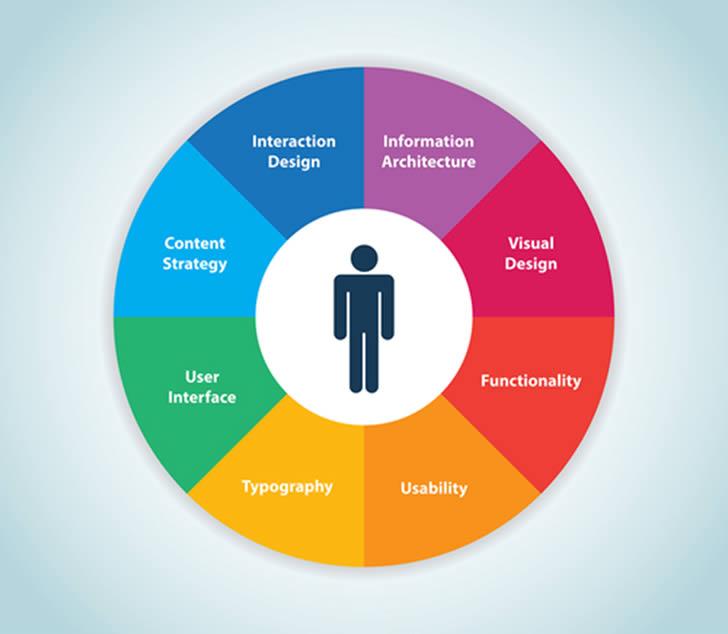In today’s digital age, the way we shop has transformed dramatically. No longer confined to brick-and-mortar stores, consumers are clicking, swiping, and browsing their way through an endless array of products and services online. But have you ever stopped to wonder what makes this online shopping phenomenon possible? Enter the eCommerce business model—a framework that shapes how businesses operate in the digital marketplace. Whether you’re a budding entrepreneur looking to launch your own venture, a seasoned business owner seeking to adapt to changing consumer behaviors, or simply curious about the mechanics behind your favorite online stores, understanding eCommerce business models is essential. In this article, we’ll explore over eight common types of eCommerce business models, breaking down their unique features, advantages, and potential challenges. So grab your virtual shopping cart, and let’s dive into the fascinating world of eCommerce!
Understanding the Core of an eCommerce Business Model
In the vast landscape of online commerce, understanding the essence of an eCommerce business model is crucial for success. At its core, an eCommerce business model outlines how a company creates, delivers, and captures value in a digital environment. It’s not just about selling products online; it encompasses the entire strategy that drives the business forward.
One of the fundamental aspects of an eCommerce model is identifying the target audience. Knowing who your customers are allows you to tailor your offerings and marketing strategies effectively. Here are some key components that define a successful eCommerce business model:
- Value Proposition: What unique value does your business offer? This could be anything from exclusive products to exceptional customer service.
- Revenue Streams: How will your business make money? Common revenue streams include direct sales, subscription services, and affiliate marketing.
- Cost Structure: Understanding your costs is vital. This includes production, shipping, marketing, and technology expenses.
- Customer Relationships: How will you engage with your customers? Building trust and loyalty is essential for repeat sales.
- Channels: What platforms will you use to reach your customers? Consider your website, social media, and online marketplaces.
To illustrate the diversity of eCommerce business models, here’s a simple comparison of some common types:
| Business Model | Description | Examples |
|---|---|---|
| B2C | Business to Consumer: Direct sales from businesses to individual consumers. | Amazon, Zara |
| B2B | Business to Business: Transactions between businesses. | Alibaba, Salesforce |
| C2C | Consumer to Consumer: Consumers sell directly to other consumers. | eBay, Craigslist |
| Dropshipping | Retail fulfillment method where a store doesn’t keep the products it sells. | Oberlo, Printful |
Each of these models has its own unique challenges and opportunities. For instance, while B2C can benefit from larger customer bases, B2B may offer higher transaction values. Understanding the intricacies of these models empowers entrepreneurs to make informed decisions, ultimately steering their eCommerce venture toward long-term success. By aligning your business model with your goals and market demands, you not only enhance your operational efficiency but also pave the way for sustained growth in the competitive online marketplace.
Exploring the Benefits of Adopting an eCommerce Model
Adopting an eCommerce model can transform your business landscape, opening doors to opportunities that traditional retail simply cannot match. With the rise of technology and online shopping, it’s no surprise that more businesses are migrating to digital platforms. Here are some compelling benefits that highlight why embracing an eCommerce model is a smart move for your business.
One of the most significant advantages is global reach. Unlike brick-and-mortar stores restricted by geographical limitations, eCommerce allows you to tap into global markets. This means you can attract customers from various regions, increasing your potential sales and brand visibility exponentially.
Cost-effectiveness is another crucial factor. Operating an online store typically incurs lower overhead costs than maintaining a physical location. You can minimize expenses related to rent, utilities, and in-store staff. As a result, you can allocate more resources towards marketing and product development, enhancing your overall business strategy.
Additionally, eCommerce facilitates 24/7 availability. Your customers can shop anytime and anywhere, making it convenient for them and increasing your sales potential. With automated processes like inventory management and payment processing, you can handle transactions swiftly, ensuring a seamless customer experience.
Moreover, eCommerce models often provide invaluable insights through analytics. By leveraging data on consumer behavior, preferences, and purchasing patterns, you can tailor your marketing strategies and offers to better meet customer needs. This targeted approach not only enhances customer satisfaction but also boosts loyalty and repeat business.
| Benefit | Description |
|---|---|
| Global Reach | Sell to customers worldwide without geographical limitations. |
| Cost-Effectiveness | Lower operating costs compared to brick-and-mortar stores. |
| 24/7 Availability | Customers can shop anytime, increasing sales potential. |
| Data Insights | Utilize analytics to enhance marketing strategies and customer satisfaction. |
the benefits of adopting an eCommerce model are vast and can significantly enhance your business’s operational efficiency, reach, and profitability. If you are still hesitant, consider these advantages as a roadmap to future growth and success in the digital marketplace.
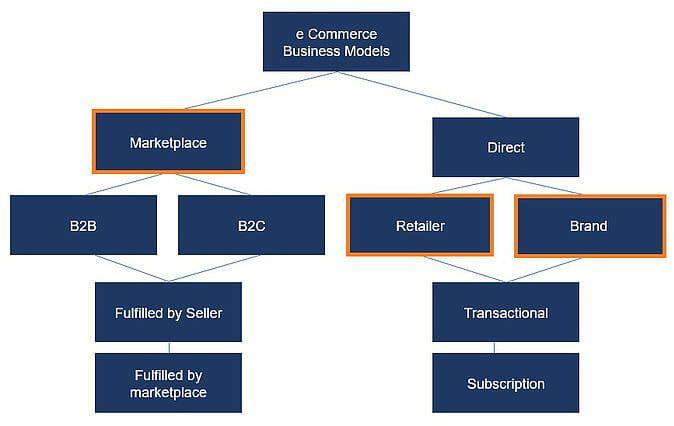
Diving into the Most Common Types of eCommerce Business Models
Understanding the landscape of eCommerce requires a closer look at the various business models that drive online commerce. Each model has its unique characteristics, advantages, and target audiences. Here, we’ll explore the most common types of eCommerce business models that entrepreneurs and companies adopt to thrive in the digital marketplace.
Business-to-Consumer (B2C) is perhaps the most recognized eCommerce model, where businesses sell directly to consumers. This model encompasses everything from large retailers like Amazon to niche online stores. The key to success in B2C lies in creating a seamless shopping experience, engaging marketing strategies, and robust customer service.
Business-to-Business (B2B) is another prevalent model, characterized by transactions between businesses. Companies engage in bulk sales or wholesale transactions, often at discounted rates. B2B platforms excel by offering streamlined purchasing processes and tailored solutions that meet the specific needs of their business clients.
Consumer-to-Consumer (C2C) platforms have emerged as a powerful force in the eCommerce space, allowing individuals to sell to one another. Websites like eBay and Craigslist empower users to auction or sell their products directly, fostering a community-driven marketplace. This model thrives on user trust and the ease of transactions.
The Subscription-based model has gained traction across various sectors. Companies like Netflix and Birchbox offer customers access to products or services on a recurring basis. This model not only ensures steady revenue but also builds customer loyalty and long-term relationships.
Additionally, the Marketplace model aggregates multiple sellers under one platform, such as Etsy or Amazon Marketplace, providing consumers with a wide variety of products. This model benefits from a larger audience and reduces the burden on individual sellers to drive traffic to their shops.
| Model Type | Target Audience | Key Benefit |
|---|---|---|
| B2C | Consumers | Simplified shopping experience |
| B2B | Businesses | Bulk purchasing discounts |
| C2C | Individual Buyers | Community-driven sales |
| Subscription | Consumers | Consistent revenue stream |
| Marketplace | Multiple Sellers | Wider product variety |
the Direct-to-Consumer (DTC) model allows brands to eliminate middlemen by selling directly to their customers. This approach not only enhances brand loyalty but also provides valuable consumer data, enabling businesses to tailor their offerings more effectively. As the eCommerce landscape continues to evolve, understanding these models is crucial for anyone looking to carve out their niche in this vibrant marketplace.
B2C eCommerce: Connecting Brands Directly with Consumers
B2C eCommerce, or Business-to-Consumer eCommerce, has revolutionized the way brands connect with their customers. This direct channel allows businesses to engage with consumers in a more personal and meaningful way. Here, we explore how this model empowers brands and enhances the shopping experience for consumers.
One of the most compelling aspects of B2C eCommerce is the ability to personalize the shopping experience. Brands can leverage consumer data to tailor their offerings, ensuring that customers find products that meet their specific needs and preferences. This level of customization is achieved through:
- Data Analytics: Understanding customer behavior and preferences.
- Targeted Marketing: Creating personalized marketing campaigns based on consumer insights.
- Dynamic Pricing: Adjusting prices according to demand and consumer willingness to pay.
In addition to personalization, B2C eCommerce allows for direct communication between brands and consumers. This interaction fosters a sense of community and loyalty, as consumers feel more connected to the brands they support. Consider the following benefits of direct engagement:
- Real-time Feedback: Brands can gather immediate feedback on products and services.
- Customer Support: Providing instant assistance through chatbots and live support.
- Brand Storytelling: Sharing the brand’s mission and values directly with consumers.
A successful B2C eCommerce strategy also requires a seamless user experience across all touchpoints. This involves optimizing websites and mobile applications for easy navigation, fast loading times, and secure payment options. Factors to consider include:
| User Experience Factor | Importance |
|---|---|
| Responsive Design | Ensures accessibility on all devices. |
| Fast Checkout Process | Reduces cart abandonment rates. |
| Secure Payment Options | Builds consumer trust and confidence. |
Ultimately, B2C eCommerce is not just about selling products; it’s about building relationships. By connecting brands directly with consumers, businesses can create a loyal customer base that not only drives revenue but also champions the brand. In this digital age, the brands that prioritize consumer connection will pave the way for long-term success in the ever-evolving eCommerce landscape.

B2B eCommerce: The Power of Wholesale and Bulk Sales
B2B eCommerce has revolutionized the way businesses conduct transactions, particularly when it comes to wholesale and bulk sales. These models allow companies to purchase goods in larger quantities, enabling significant cost savings and enhancing operational efficiency. The shift towards online platforms for these transactions has opened doors to new opportunities and has changed the traditional supply chain dynamics.
Wholesale and bulk sales in a B2B environment present several advantages:
- Cost Efficiency: Buying in bulk often leads to lower per-unit prices, which can greatly reduce overall expenses.
- Streamlined Ordering: E-commerce platforms simplify order placement, making it easier for businesses to replenish stock without the hassle of manual processes.
- Wider Selection: Online wholesale marketplaces offer a vast array of products, allowing businesses to source everything they need from a single location.
- Enhanced Negotiation: Digital platforms often empower buyers with insights into pricing trends, facilitating more effective negotiations with suppliers.
Furthermore, the accessibility of B2B eCommerce platforms enables businesses to reach a global market. Companies can now engage with suppliers and customers around the world, thus expanding their potential customer base and driving growth. This geographical flexibility is essential for businesses looking to scale and reach new markets without the constraints of traditional retail limitations.
To illustrate the impact of wholesale and bulk sales, consider the following table that compares traditional purchasing methods with B2B eCommerce:
| Aspect | Traditional Purchasing | B2B eCommerce |
|---|---|---|
| Order Size | Limited to what suppliers can provide | Flexible, enabling large bulk orders |
| Pricing | Often fixed, less room for negotiation | Dynamic pricing based on quantity and demand |
| Speed of Transaction | Lengthy, often requiring phone calls and faxes | Instantaneous, with automated processes |
the integration of wholesale and bulk sales into the B2B eCommerce model offers unparalleled advantages for businesses. By leveraging these capabilities, companies can not only improve their bottom line but also adapt to the rapidly evolving market landscape. Embracing this model is no longer a choice but a necessity for those looking to thrive in today’s competitive environment.
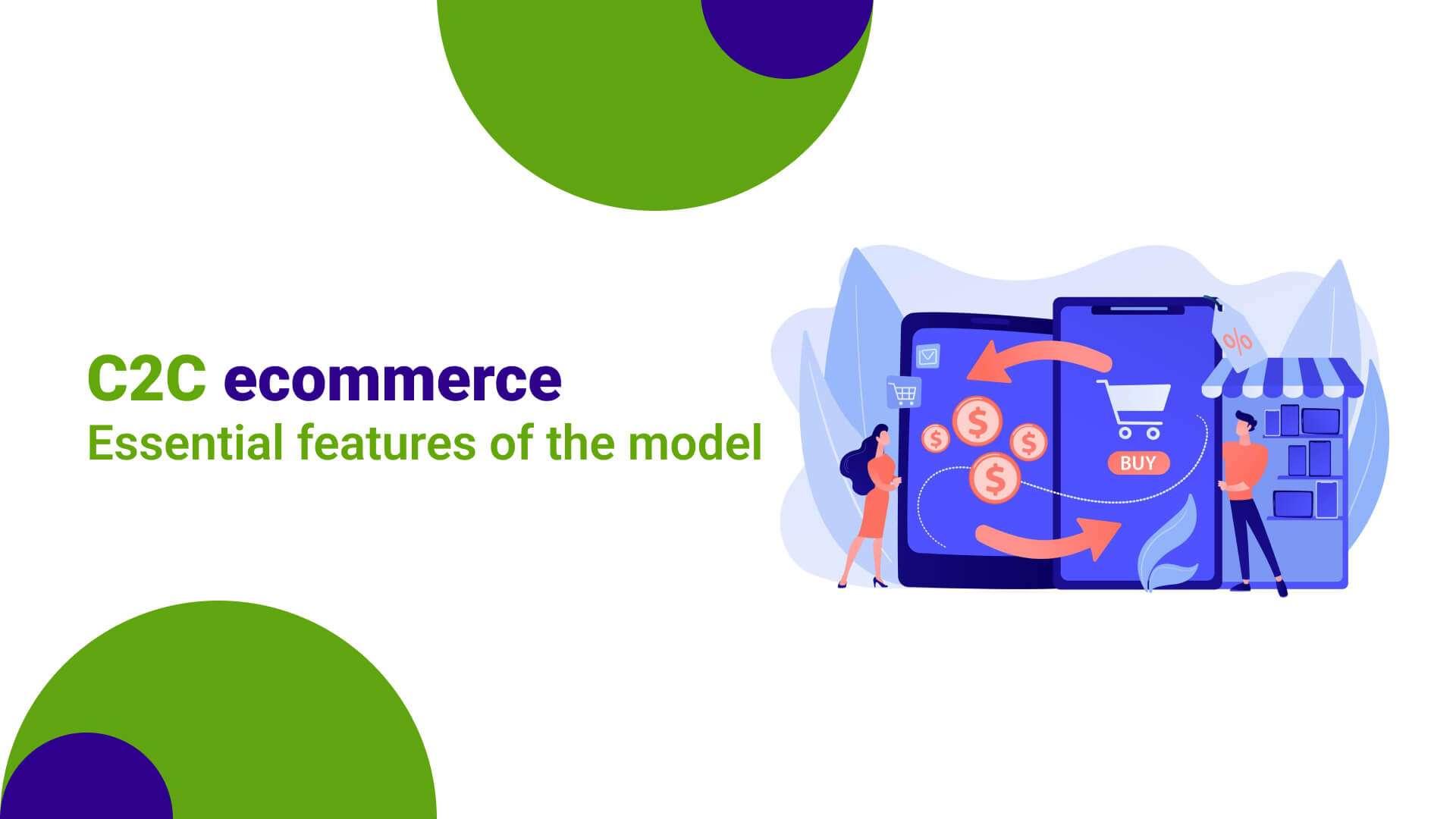
C2C eCommerce: How Peer-to-Peer Transactions Shape the Market
In the evolving landscape of eCommerce, C2C (Consumer-to-Consumer) transactions are redefining how individuals engage in buying and selling. This model empowers everyday consumers to become sellers, fostering a dynamic marketplace that thrives on peer interactions. With platforms like eBay, Etsy, and Facebook Marketplace at the forefront, consumers are not just shoppers; they are entrepreneurs.
The beauty of C2C eCommerce lies in its accessibility. Anyone with a product to sell can easily create an account, list items, and reach a global audience. This democratization of commerce not only encourages creativity and entrepreneurship but also offers buyers unique products often not found in traditional retail stores. Here are some key aspects that highlight the impact of this model:
- Cost-Effectiveness: Sellers can bypass traditional retail costs, thus offering competitive prices to buyers.
- Community Engagement: C2C platforms often foster communities, enhancing trust and encouraging repeat transactions.
- Variety and Uniqueness: Consumers can find an array of products, from vintage items to handmade crafts, appealing to niche markets.
Moreover, the rise of social media has further catalyzed C2C transactions. Platforms like Instagram and Pinterest not only showcase products but also enable direct transactions through shoppable posts. This seamless integration of social networking with eCommerce opens up avenues for organic advertising and customer engagement, creating a win-win situation for sellers and buyers alike.
To illustrate the growing significance of C2C eCommerce, consider the following table that highlights key statistics:
| Statistic | Value |
|---|---|
| Total C2C Market Size (2023) | $80 Billion |
| Percentage of Online Sales via C2C | 20% |
| Growth Rate (2022-2027) | 15% CAGR |
As we dive deeper into this peer-to-peer economy, the implications for traditional retail are profound. Retailers must adapt to this shift, leveraging technology and customer insights to stay relevant. The challenge lies not just in competition, but in understanding that C2C eCommerce is here to stay, and it’s reshaping how we view transactions in the marketplace.
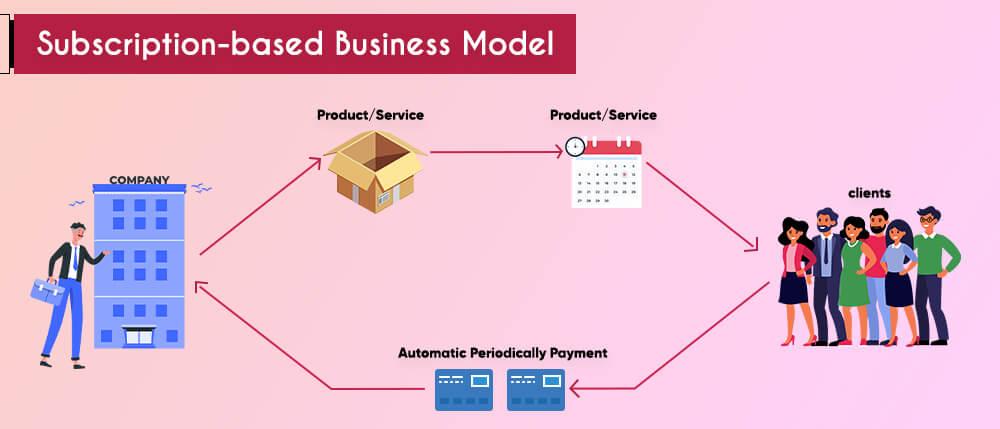
Subscription-Based Models: Creating Consistent Revenue Streams
In today’s competitive landscape, subscription-based models have emerged as a powerful strategy for generating stable revenue streams. By offering products or services on a recurring basis, businesses can cultivate a loyal customer base while minimizing the unpredictability associated with traditional sales. This model not only enhances customer retention but also provides valuable insights into consumer behavior, enabling companies to tailor their offerings accordingly.
One of the most appealing aspects of subscription plans is their ability to foster customer loyalty. By committing to a subscription, customers often feel a deeper connection to the brand, which can lead to increased lifetime value. Consider the following benefits:
- Predictable Revenue: Subscriptions provide businesses with consistent cash flow, allowing for better financial planning and inventory management.
- Enhanced Customer Relationships: Regular interactions through subscription services enable brands to engage with their customers, leading to improved satisfaction and retention.
- Opportunity for Upselling: With a captive audience, businesses can easily introduce new products or upgrades, increasing average order value.
Moreover, subscription models can be tailored to fit various industries, from digital content providers to physical goods. For instance, software companies often utilize a SaaS (Software as a Service) model, while eCommerce retailers might offer curated subscription boxes. Here’s a quick comparison of some popular subscription types:
| Subscription Type | Description | Example |
|---|---|---|
| Product Subscription | Regular delivery of products. | Beauty boxes |
| Membership Sites | Exclusive content access for a fee. | Online courses |
| SaaS | Cloud-based software solutions. | Adobe Creative Cloud |
Furthermore, transitioning to a subscription-based model can significantly reduce marketing costs over time. With a steady stream of recurring customers, the need for frequent acquisition campaigns diminishes, allowing businesses to focus on nurturing existing relationships. This shift not only enhances profitability but also paves the way for sustainable growth.
Ultimately, embracing a subscription-based approach transforms how businesses operate and engage with customers. By prioritizing consistent value delivery, companies can establish a reliable income source while adapting to the evolving needs of their audience. The future of eCommerce is undoubtedly leaning towards these innovative models, making it essential for businesses to reconsider their strategies for long-term success.
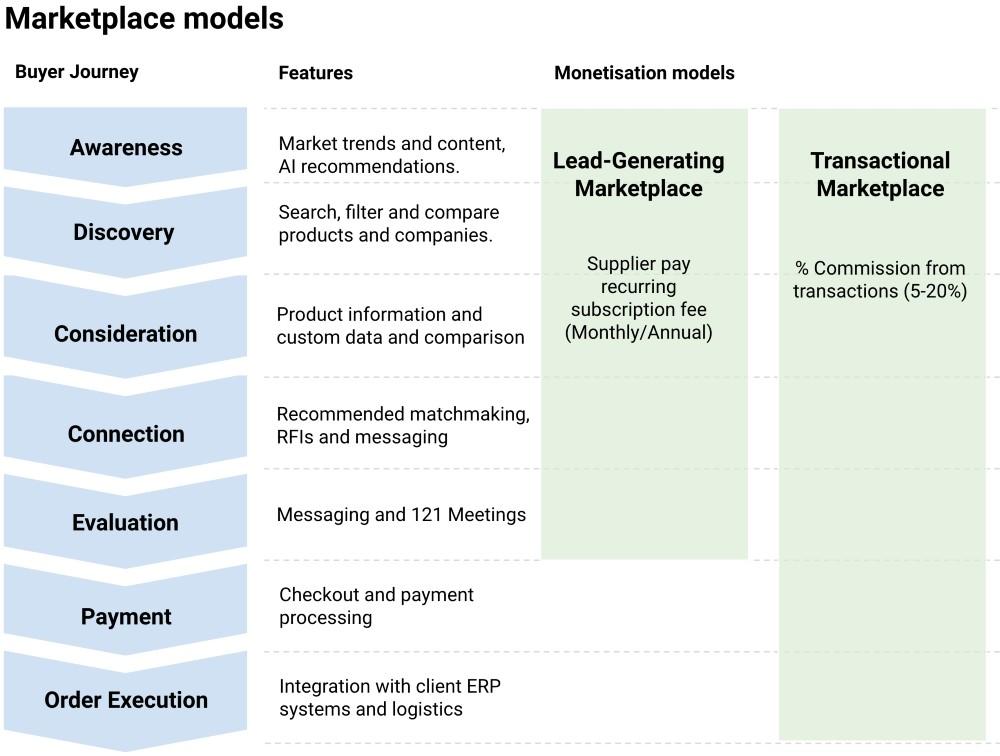
Marketplace Models: Harnessing the Power of Multiple Sellers
In the dynamic landscape of eCommerce, marketplace models have emerged as a powerful approach that leverages the strengths of multiple sellers. By creating a platform where various vendors can showcase their products, these models facilitate a diverse shopping experience that not only benefits consumers but also enhances seller visibility and sales potential.
One of the key advantages of marketplace models is the increased product variety. With numerous sellers competing for consumer attention, customers have access to a wider range of products, often at competitive prices. This not only fosters a vibrant shopping environment but also encourages sellers to innovate and differentiate their offerings. Whether it’s handmade crafts, electronic gadgets, or fashion items, marketplaces cater to every niche.
Another significant benefit is the shared marketing efforts. In a marketplace, the responsibility of attracting customers doesn’t solely lie with individual sellers. Instead, the platform itself invests in marketing and advertising, creating a collective pool of resources that enhances brand visibility. This collaborative approach not only reduces costs for sellers but also maximizes the reach of the entire marketplace.
Moreover, marketplace models often come equipped with robust analytics tools that help sellers track performance, understand consumer behavior, and optimize their strategies. These insights empower sellers to make data-driven decisions, improving their product listings and marketing tactics. As a result, sellers are more likely to see a boost in sales and customer engagement.
integrating multiple sellers fosters a sense of community. Customers often enjoy the storytelling aspect of shopping from various independent sellers, building a rapport and loyalty towards the marketplace. This community aspect can enhance customer retention, as shoppers tend to return to platforms that resonate with their values and preferences.
| Benefits of Marketplace Models | Impact |
|---|---|
| Increased Product Variety | Attracts more customers through diverse options |
| Shared Marketing Efforts | Reduces individual seller costs |
| Robust Analytics | Enhances seller performance and strategies |
| Community Building | Fosters customer loyalty and retention |
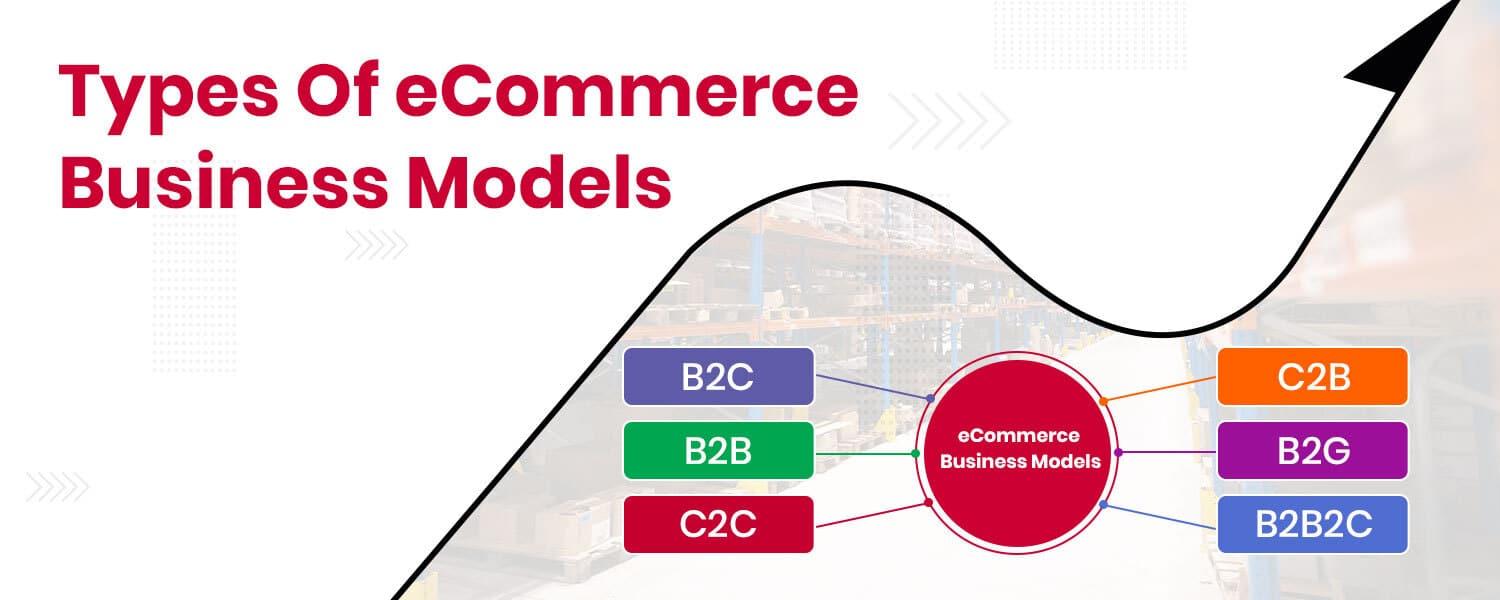
Choosing the Right eCommerce Model for Your Business Vision
When it comes to flourishing in the competitive world of online commerce, selecting the right eCommerce model is paramount. Each model has its own unique strengths, weaknesses, and suitability depending on your business vision and objectives. Understanding these options will help you align your operations with your goals, ensuring that your online store not only stands out but thrives.
Business-to-Consumer (B2C) is perhaps the most well-known eCommerce model, where businesses sell directly to consumers. This model is ideal for those looking to build a brand that resonates with individual customers. Think of platforms like Amazon or eBay, where the emphasis is on consumer experience, ease of navigation, and quick purchasing capabilities.
On the other hand, if you have a vast network of suppliers or manufacturers, consider the Business-to-Business (B2B) model. This model typically involves larger transactions and a focus on long-term relationships. B2B platforms cater to wholesale needs, making it easier for businesses to procure products in bulk at discounted rates. It’s a fantastic option for those who want to engage in high-volume sales.
Dropshipping is another enticing model for aspiring entrepreneurs who want to minimize upfront costs. In this setup, you sell products without holding inventory. Instead, when a customer makes a purchase, you forward the order to a third-party supplier who ships the product directly to the customer. This model is great for those who wish to test the market without significant financial risk.
For those focused on community and creativity, the Consumer-to-Consumer (C2C) model could be a perfect match. Platforms like Etsy or eBay allow individuals to sell directly to each other, fostering a sense of community. This model thrives on user-generated content and unique, handmade products, making it particularly appealing to creatives and artisans.
| Model | Best For | Key Features |
|---|---|---|
| B2C | Retail brands targeting consumers | Direct sales, consumer-focused |
| B2B | Bulk suppliers and manufacturers | Long-term contracts, larger transactions |
| Dropshipping | Low-budget entrepreneurs | No inventory, supplier-managed shipping |
| C2C | Independent sellers | Community-driven, unique products |
Ultimately, your choice of eCommerce model should reflect not only your business vision but also your target audience’s preferences and behaviors. By taking the time to evaluate these options, you will set yourself on a path toward sustainable growth and profitability in the ever-evolving digital marketplace.
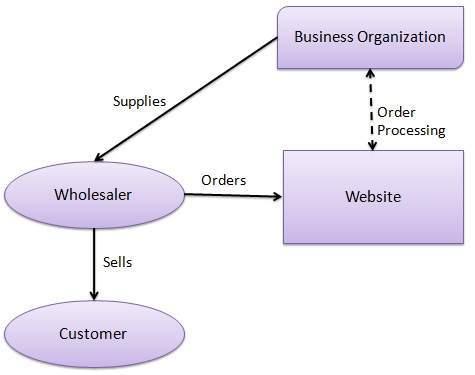
Tips for Successfully Implementing Your Chosen eCommerce Model
Successfully implementing your chosen eCommerce model involves a strategic approach that takes into account various elements of your business. Here are some essential tips to guide you through the process:
- Understand Your Audience: Before launching your eCommerce store, invest time in researching your target market. Gather insights about their preferences, shopping habits, and pain points. This knowledge will help tailor your offerings and marketing efforts to meet their needs.
- Choose the Right Platform: Selecting the right eCommerce platform is crucial. Consider factors such as scalability, customization options, payment gateways, and ease of use. Popular platforms like Shopify, WooCommerce, and Magento each have unique features suited for different business types.
- Create a Seamless User Experience: Ensure that your website is user-friendly. Optimize your site’s navigation, speed, and mobile responsiveness. A smooth shopping experience reduces cart abandonment and encourages repeat visits.
- Implement Secure Payment Options: Trust is paramount in eCommerce. Offer multiple secure payment methods to cater to different customer preferences. Make sure that your checkout process is straightforward and reassuring, highlighting security features.
- Leverage Digital Marketing: Utilize SEO, social media, and email marketing to drive traffic to your site. Engaging content and targeted advertisements can significantly improve visibility and attract potential customers.
Moreover, keeping track of your performance metrics is vital. Regularly analyze sales data, customer behavior, and website traffic to refine your strategies. Utilizing tools like Google Analytics can provide insights that help you pivot when necessary.
Lastly, don’t underestimate the power of customer service. Implementing a robust support system can enhance customer satisfaction and loyalty. Consider integrating chatbots for instant query resolution or setting up a dedicated helpdesk for more complex issues.
Frequently Asked Questions (FAQ)
Q&A: What Is an eCommerce Business Model? (8+ Common Types)
Q1: What exactly is an eCommerce business model?
A: Great question! An eCommerce business model outlines how a company sells its products or services online. It’s like a blueprint for how a business operates in the digital world. Understanding these models is crucial for anyone looking to start an online venture or optimize an existing one.
Q2: Why should I care about different eCommerce business models?
A: Knowing the different eCommerce business models can empower you to choose the right one for your goals. Each model has its unique advantages and challenges. Whether you’re looking to sell directly to consumers or create a platform for others to sell, understanding these options can help you maximize your profits and streamline your operations.
Q3: Can you give me an overview of the common types of eCommerce business models?
A: Absolutely! Here are some of the most common eCommerce business models you should know about:
- B2C (Business to Consumer): This is the most traditional model, where businesses sell directly to consumers. Think of online retailers like Amazon and Walmart.
- B2B (Business to Business): Here, businesses sell products or services to other businesses. Manufacturers and wholesalers often operate under this model.
- C2C (Consumer to Consumer): Platforms like eBay and Etsy enable consumers to sell to one another. It’s an excellent way for individuals to monetize their unused items or handmade goods.
- C2B (Consumer to Business): In this model, individuals sell products or services to businesses. Think freelance platforms like Upwork, where freelancers offer their skills to companies.
- D2C (Direct to Consumer): Brands sell directly to consumers, bypassing any middlemen. This model has gained traction with companies like Warby Parker and Dollar Shave Club.
- Subscription-based: Customers pay a recurring fee for access to a product or service. Netflix and subscription box services are prime examples.
- Marketplace: Websites like Amazon or Etsy allow multiple sellers to list their products, providing variety and convenience for shoppers.
- Dropshipping: This model allows you to sell products without holding inventory. When a sale occurs, you purchase the item from a third party, who handles shipping directly to the customer.
Q4: How do I choose the right eCommerce business model for my venture?
A: Choosing the right model depends on several factors, including your target audience, product type, resources, and goals. Start by evaluating what you’re passionate about and the market demand. Then, consider your budget and logistics. Want to keep it simple? A B2C model might be the way to go. Looking for flexibility? Dropshipping could be your best bet!
Q5: Can I combine different models?
A: Absolutely! Many successful eCommerce businesses blend multiple models to diversify their revenue streams. For example, a B2C business could also offer a subscription service for regular customers or create a marketplace for other vendors. The key is to ensure that your approach aligns with your brand and customer needs.
Q6: What are the key challenges I should be aware of with eCommerce business models?
A: Each model comes with its own set of challenges. For instance, B2B might require longer sales cycles and relationship-building, while dropshipping may involve dealing with unreliable suppliers. It’s essential to do your homework and be prepared to adapt as you learn what works and what doesn’t.
Q7: What’s the best starting point for my eCommerce journey?
A: Start by doing thorough research! Identify your niche, understand your customers, and analyze your competition. Then, draft a business plan that includes your chosen model. This will provide clarity and direction as you move forward. And remember, the eCommerce landscape is always evolving—stay flexible and open to new opportunities!
Q8: Any final tips for aspiring eCommerce entrepreneurs?
A: Absolutely! Don’t be afraid to experiment and make mistakes along the way; they’re often the best teachers. Focus on building strong relationships with your customers, invest in marketing, and leverage social media to create awareness. And remember—success doesn’t happen overnight, so stay persistent and passionate about your vision!
Now that you’re armed with the knowledge of various eCommerce business models, are you ready to take the leap into the online marketplace? The digital world is buzzing with potential, and your opportunity awaits!
In Conclusion
As we wrap up our exploration of eCommerce business models, it’s clear that the digital marketplace offers a wealth of opportunities—each model serving a unique purpose and catering to different customer needs. Whether you’re an aspiring entrepreneur or a seasoned business owner looking to pivot, understanding these models can empower you to make informed decisions that align with your goals.
Remember, the key to success in eCommerce isn’t just about choosing a model; it’s about knowing your audience, adapting to market trends, and leveraging the right strategies to differentiate yourself from the competition. So, take the time to evaluate which model resonates most with your vision and strengths.
Now is the perfect time to dive into the world of eCommerce. With the right knowledge and determination, you can create a thriving online business that not only meets customer demands but also fulfills your entrepreneurial dreams. So go ahead, harness the power of eCommerce, and turn your ideas into reality. Happy selling!


